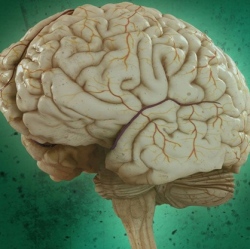
SuperAgers, aged 80 and above, with memories that are as sharp as those of healthy persons decades younger, have distinctly different looking brains than those of normal older people. Understanding these brains may enable scientists to develop strategies to protect the memories of normal aging persons.
Published Jan. 28 in the Journal of Neuroscience, the study is the first to quantify brain differences of SuperAgers and normal older people. Cognitive SuperAgers were first identified in 2007 by scientists at Northwestern’s Cognitive Neurology and Alzheimer’s Disease Center at Northwestern University Feinberg School of Medicine.
Their unusual brain signature has three common components when compared with normal persons of similar ages: a thicker region of the cortex; significantly fewer tangles (a primary marker of Alzheimer’s disease), and a whopping supply of a specific neuron, von Economo, linked to higher social intelligence.
“The brains of the SuperAgers are either wired differently or have structural differences when compared to normal individuals of the same age,” said Changiz Geula, study senior author and a research professor at the Cognitive Neurology and Alzheimer’s Disease Center.
“It may be one factor, such as expression of a specific gene, or a combination of factors that offers protection. Identifying the factors that contribute to the SuperAgers’ unusual memory capacity may allow us to offer strategies to help the growing population of ‘normal’ elderly maintain their cognitive function and guide future therapies to treat certain dementias,” said Tamar Gefen, the first study author and a clinical neuropsychology doctoral candidate at Feinberg.
